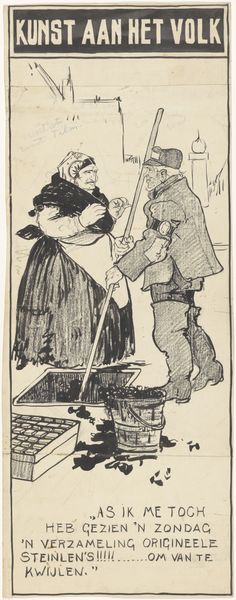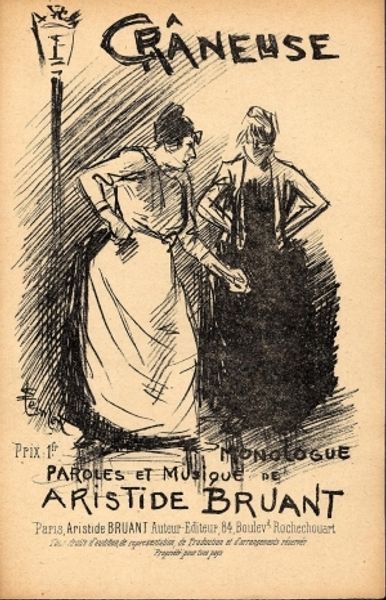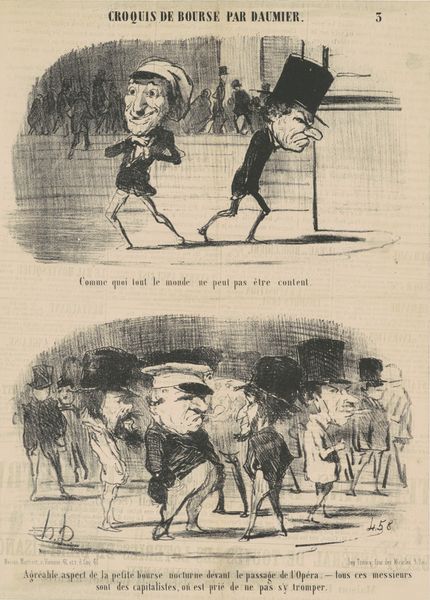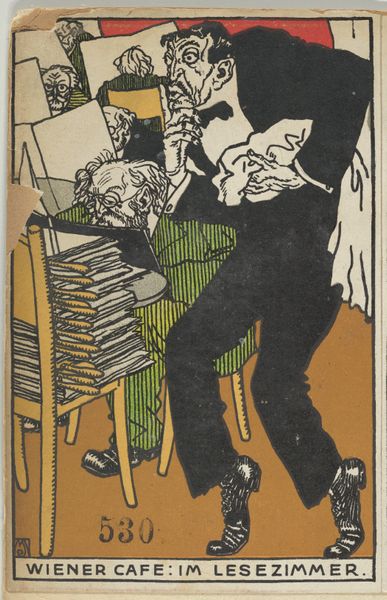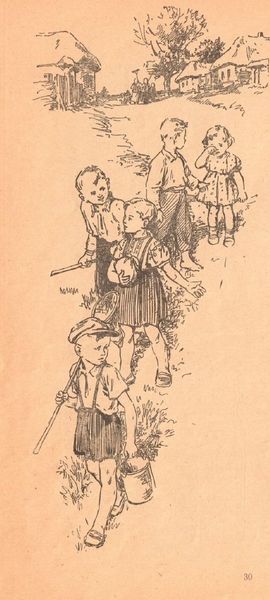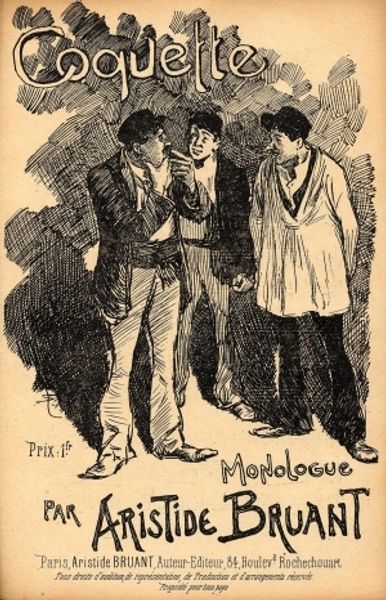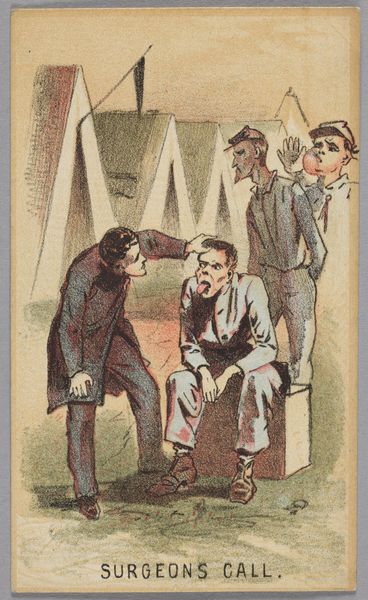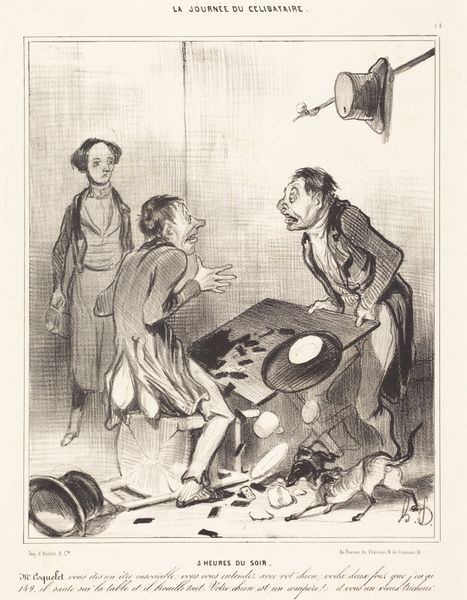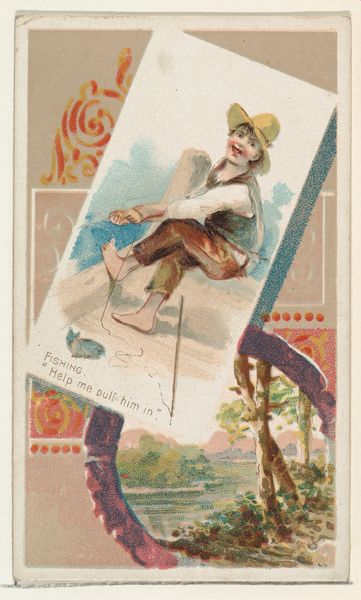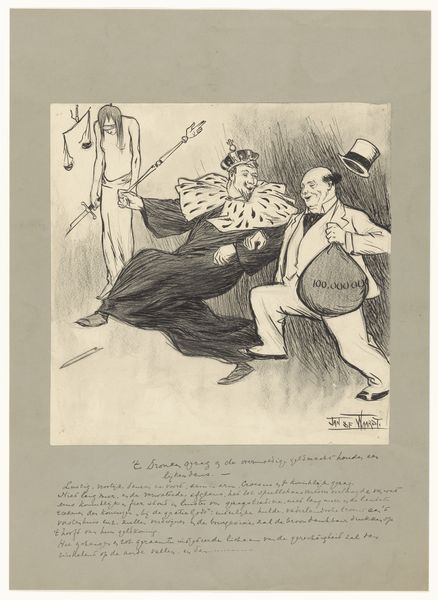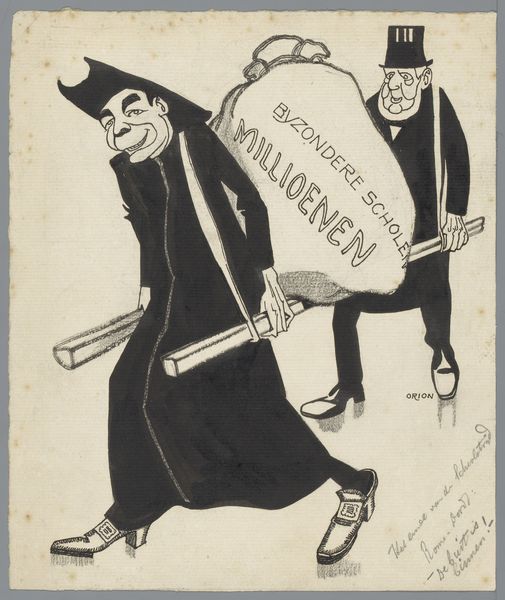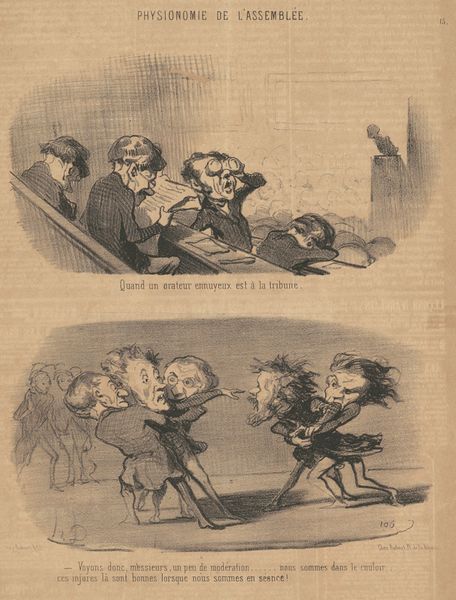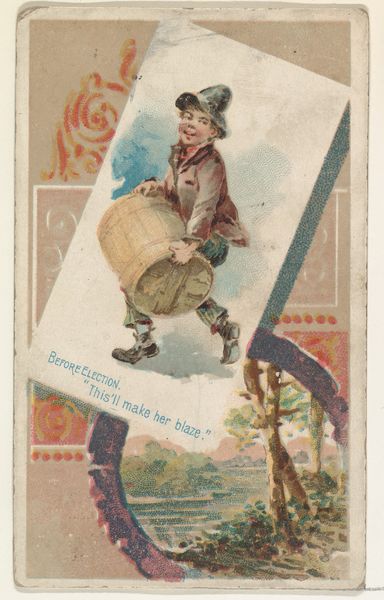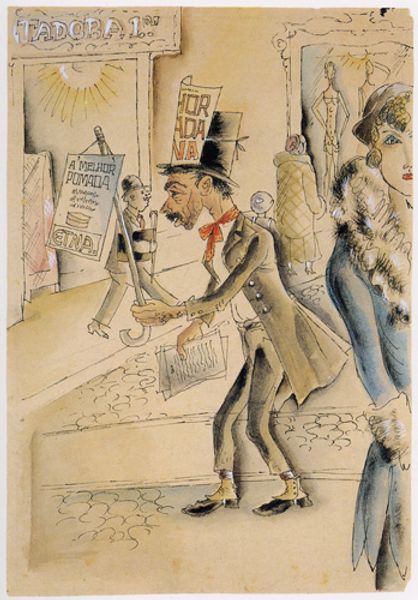
drawing, graphic-art, print, ink, poster
#
drawing
#
graphic-art
#
art-nouveau
#
street-art
#
hand-lettering
#
narrative-art
# print
#
hand drawn type
#
figuration
#
text
#
personal sketchbook
#
ink
#
sketchwork
#
hand-drawn typeface
#
pen-ink sketch
#
pen work
#
symbolism
#
sketchbook drawing
#
cityscape
#
storyboard and sketchbook work
#
poster
#
sketchbook art
Copyright: Public domain
Editor: Here we have "Bavarde," a print from 1889 by Théophile Alexandre Steinlen. It looks like it’s ink on paper, probably a poster. It’s so raw, almost like a sketch, but with this bold Art Nouveau lettering. What's your read on this? Curator: What strikes me is its explicit grounding in production. This wasn't aiming for the hallowed halls of a museum. This image was meant to circulate widely as popular entertainment, printed quickly and cheaply for the masses. How does its status as a printed poster inform our understanding? Editor: I hadn't thought of it that way, I was focusing on the composition... How it leads the eye to follow the figures. The "Bavarde" is so big. Curator: Exactly, look at the materiality of the poster. It is a commercial product. The visible sketch lines point towards the hand of the artist but contrast the commercial need for quick and efficient reproduction. Even the style of drawing references street art. This would have hung amongst other advertisements, clamoring for attention. The means of production deeply affect its presentation, what are your thoughts? Editor: That makes sense. So, the contrast between its artistic quality and its commercial purpose is deliberate? It blurs the line between high art and everyday life? Curator: Precisely. The content, a scene of city life with working class people, ties directly into that idea. Steinlen used his skill to produce commercial material for a rising, changing audience and economy. Consider also that the poster medium allowed access to visual statements where there might have previously been none, or much fewer! How does that realization strike you? Editor: It changes my perspective entirely. It makes me see it as more radical. I was focused on the artistic skill and subject matter, and missing how accessible it became. Curator: Indeed! And by considering the materials and social context, we avoid traditional definitions and can start asking critical questions about the role and meaning of art, and its potential function as a part of, rather than detached from, commerce and public life.
Comments
No comments
Be the first to comment and join the conversation on the ultimate creative platform.
